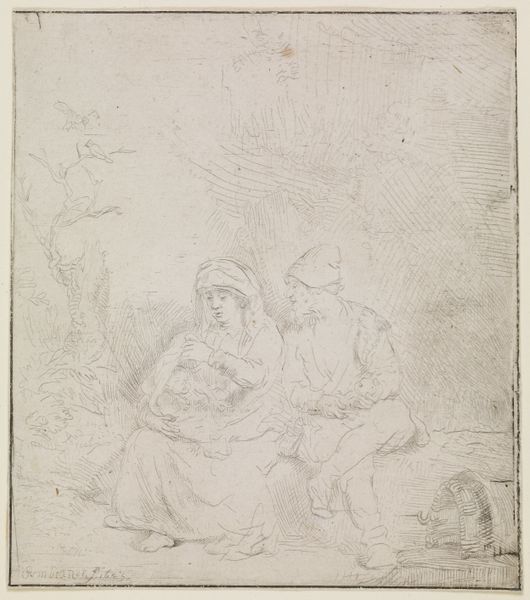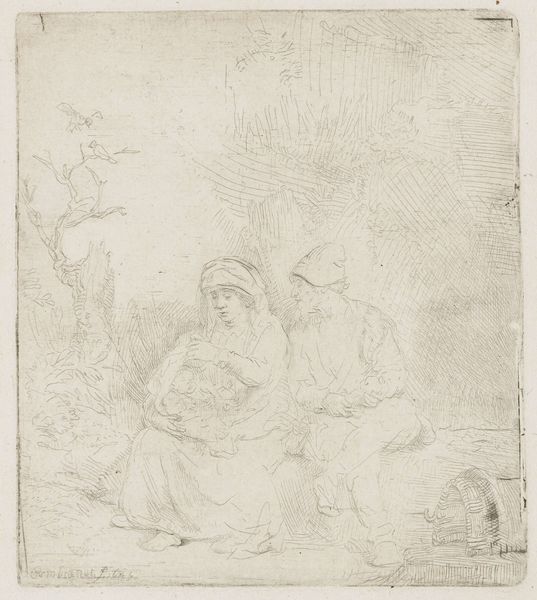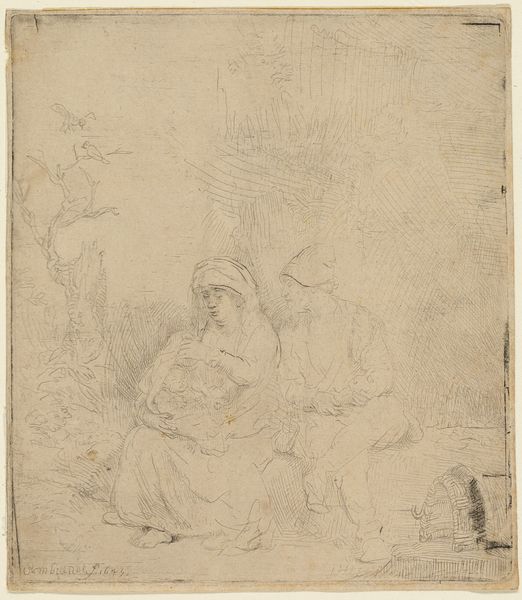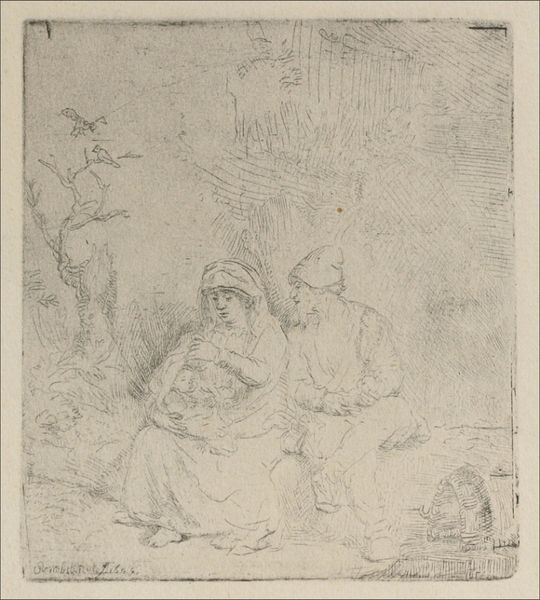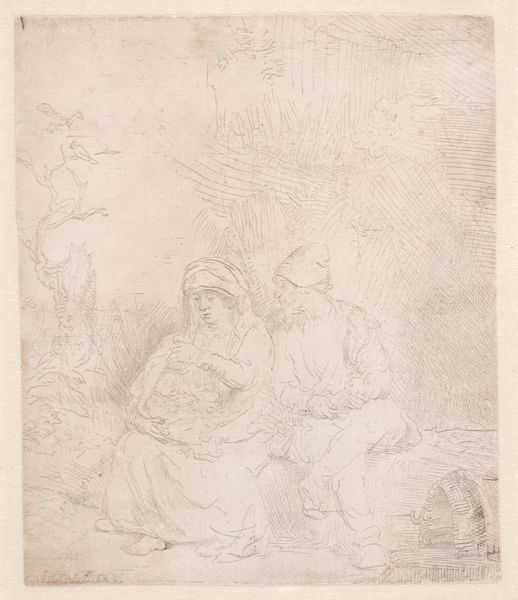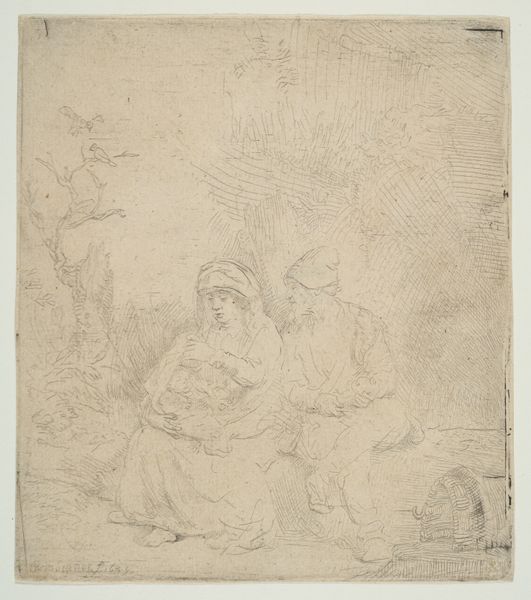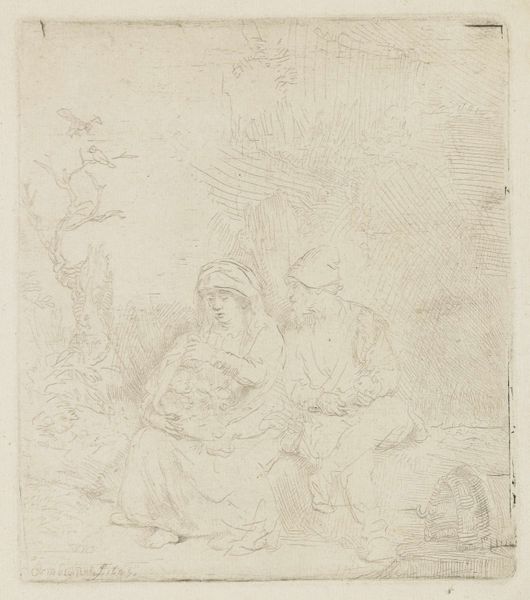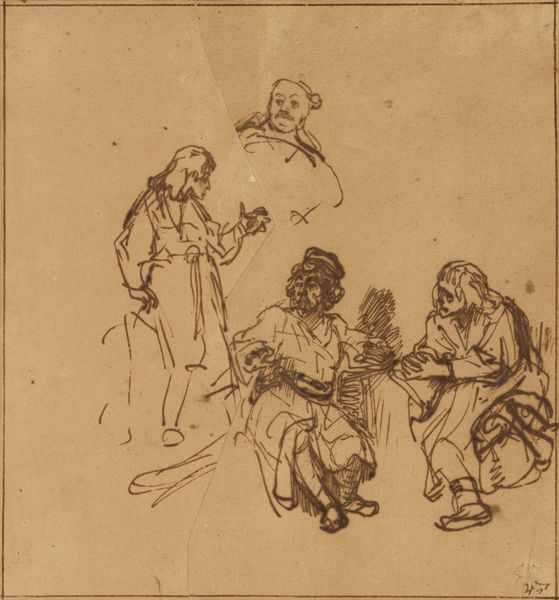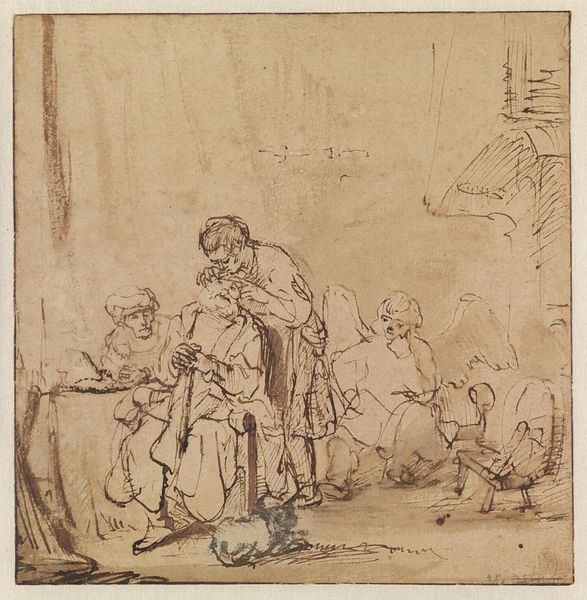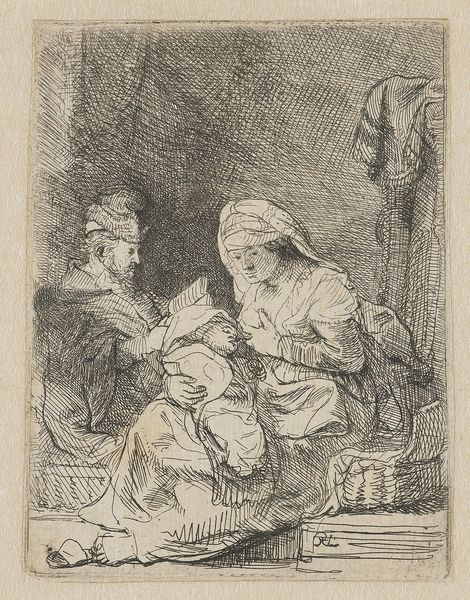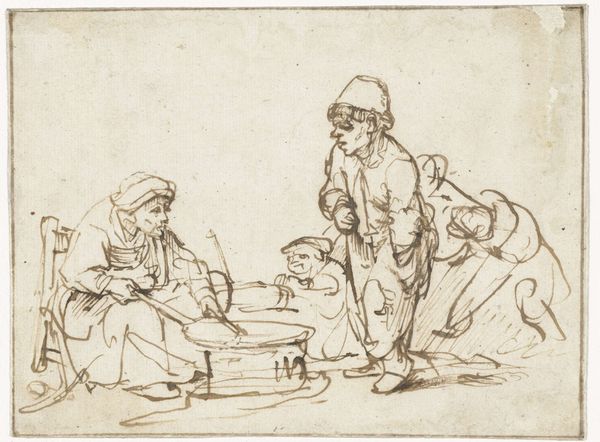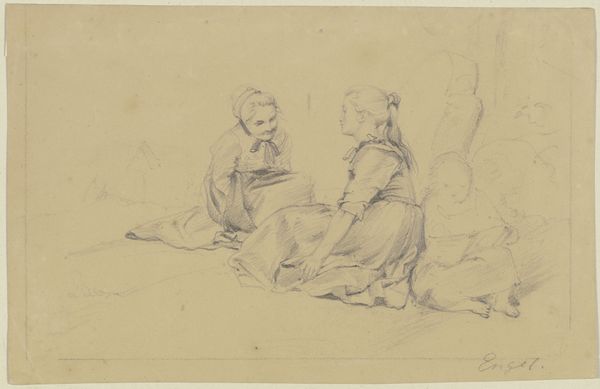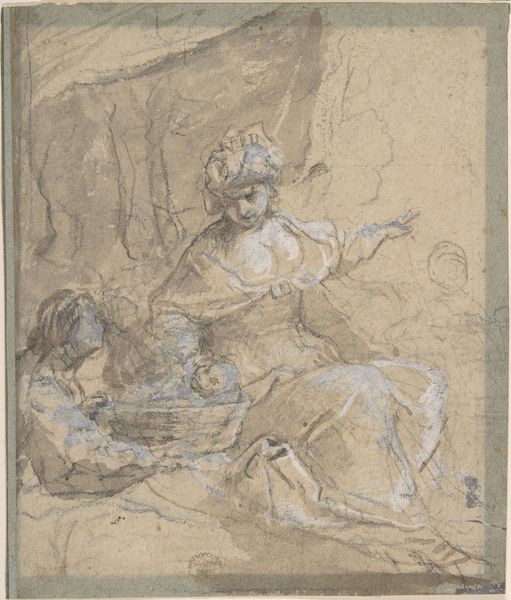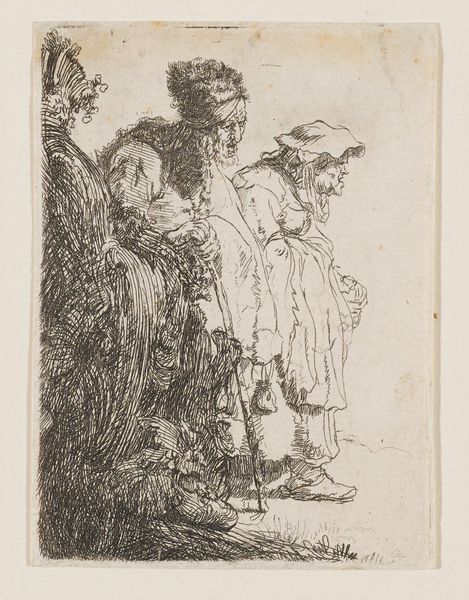
drawing, etching
#
drawing
#
toned paper
#
light pencil work
#
quirky sketch
#
baroque
#
etching
#
pencil sketch
#
landscape
#
figuration
#
personal sketchbook
#
sketchwork
#
ink drawing experimentation
#
sketchbook drawing
#
history-painting
#
storyboard and sketchbook work
#
sketchbook art
Dimensions: height 132 mm, width 115 mm
Copyright: Rijks Museum: Open Domain
Editor: This is Rembrandt van Rijn’s "The rest on the flight to Egypt: lightly etched" from 1645. It's an etching, and it feels almost like a fleeting observation, like a page from a sketchbook. What stands out to you? Curator: What I see is Rembrandt engaging with the visual language around stories of migration and refuge. This is not just a biblical scene, but also a poignant commentary on the lives of marginalized people of the time. What does it mean to depict the Holy Family as weary travelers? Editor: That's interesting. I hadn't thought about it beyond the religious narrative. Are you suggesting he was using this familiar story to reflect on contemporary issues? Curator: Absolutely. Think about the historical context. The 17th century was marked by displacement due to war, religious persecution, and economic hardship. How does Rembrandt’s rendering of Mary, Joseph, and the infant Jesus as ordinary people—vulnerable and seeking shelter—intersect with these socio-political realities? Editor: It does give the image a whole new dimension. It’s not just a sacred scene, but also a portrayal of the struggles faced by ordinary families seeking safety. Curator: Exactly. And notice the subtle details – their posture, the minimal landscape, almost bare, speaks volumes about their state of vulnerability and dependence. By emphasizing their humanity, Rembrandt challenges us to consider the broader implications of displacement and how society treats those who are forced to migrate. What do you think that asks of the viewer? Editor: I guess, it asks us to look beyond the surface and empathize with the lived experiences of refugees throughout history, maybe even now. Curator: Precisely. It prompts us to examine the power dynamics inherent in displacement and the responsibilities we have toward those seeking refuge, and reflect on the ethical implications. Editor: Wow, I’ll never see Rembrandt the same way again! I appreciate the chance to look at this with fresh eyes. Curator: Me too! Engaging with art through this lens is a reminder of its capacity to mirror and challenge our understanding of the world and lived realities.
Comments
No comments
Be the first to comment and join the conversation on the ultimate creative platform.
